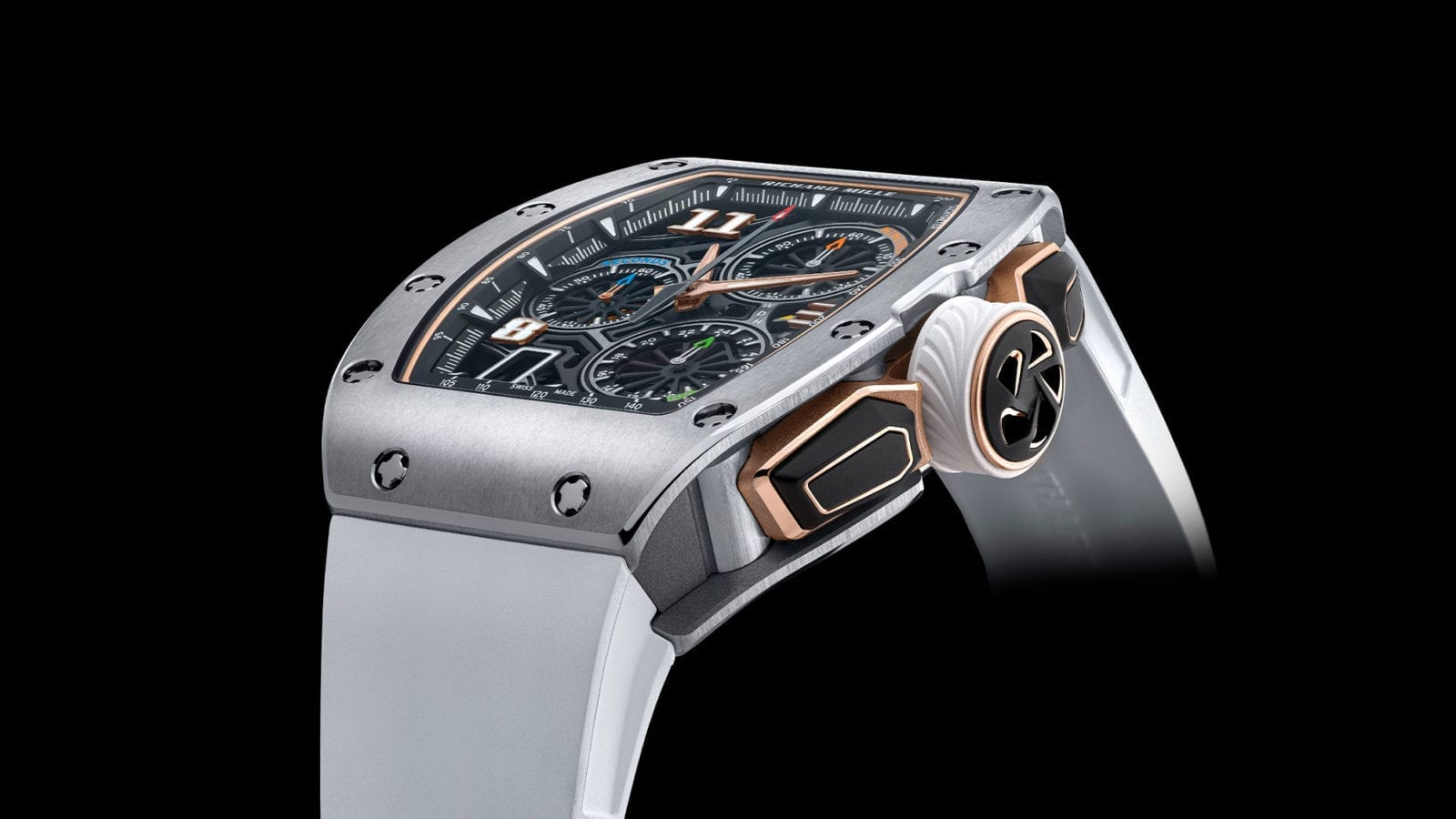Precision Winter 2020: Richard Mille RM 72-01

Inside story: the RM 72-01 Lifestyle Chronograph, from £175,000
It’s probably fair to say that Richard Mille watches are something of an acquired taste. Indeed, when non-horophiles see one for the first time they invariably respond with a look of bemusement. And that’s usually before they’ve been told the price.
But when you look at a Richard Mille closely – or better still, start to make a habit of wearing one – you gradually ‘get it’. It’s only then that you begin to appreciate the fact that these are serious bits of engineering in which every component has been created without compromise.
When the first RMs went on sale 20 years ago, the ebullient Mr Mille used to like showing people a watch, telling them why it cost so much, how long it took to make each titanium screw and how technically advanced the movement was. And then he’d swing it by the strap and chuck it across the room with a throaty laugh. That was his way of showing people that he believed in what he was doing, and that it had some substance. As the firm grew, he was able to demonstrate the quality and resilience of his products more widely by recruiting brand ambassadors, the automobile-related roster of which now includes F1 driver Romain Grosjean, IndyCar legend Scott Dixon and rally stars Sébastien Loeb and Sébastien Ogier.
The line-up also includes Sébastien Buemi, who took home his third LMP1 winner’s trophy on the trot from this year’s Le Mans 24 Hours, which also featured the debut of the Richard Mille Racing Team of three female drivers, Beitske Visser, Sophia Flörsch and Tatiana Calderón. The trio finished ninth in LMP2 and 13th overall.
Mille insists that the team, and all his other ambassadors, wear their watches ‘to the office’ to show that they really are up to the job. You can regularly see the timepieces on the wrist of current F1 drivers during sessions, all of them ticking away happily despite the forces involved.
What’s more impressive is that the brand never appears to slow in its quest for interesting new ways of interpreting clockwork in terms of everything from aesthetics to function, materials and, in particular, engineering. A case in point is the new RM 72-01 Lifestyle Chronograph that features the maker’s first entirely in-house developed and manufactured flyback chronograph movement.
Although numerous other brands have been making chronograph wristwatches for the best part of a century, Richard Mille is the first to come up with a ‘double-clutch’ system that enables the chronograph mechanism to be used without significantly reducing the power reserve required to run the main timekeeping function. It works by using separate, de-clutchable mechanisms to drive the chronograph seconds and minute hands independently.
Equally impressive is the fact that the movement has been kept to a mere 6.05mm thick despite containing 425 components. Regardless of whether or not the chronograph function is used, the watch will run autonomously for 50 hours (it winds automatically through the platinum oscillating weight visible through the transparent case back).
Engineering addicts will also be interested to learn that, according to the official description, ‘the two pushers require the exact same force to activate the various different functions. The precise pressure required was calculated so that the engagement of the mechanism is distinct, yet gentle. The shape and surface of the pushers, along with the ‘click’ sound that is so clear and unambiguous to both finger and ears alike, help to create a feeling of comfort.’
Starting at around £175,000, the RM 72-01 is comfortingly expensive, too.
